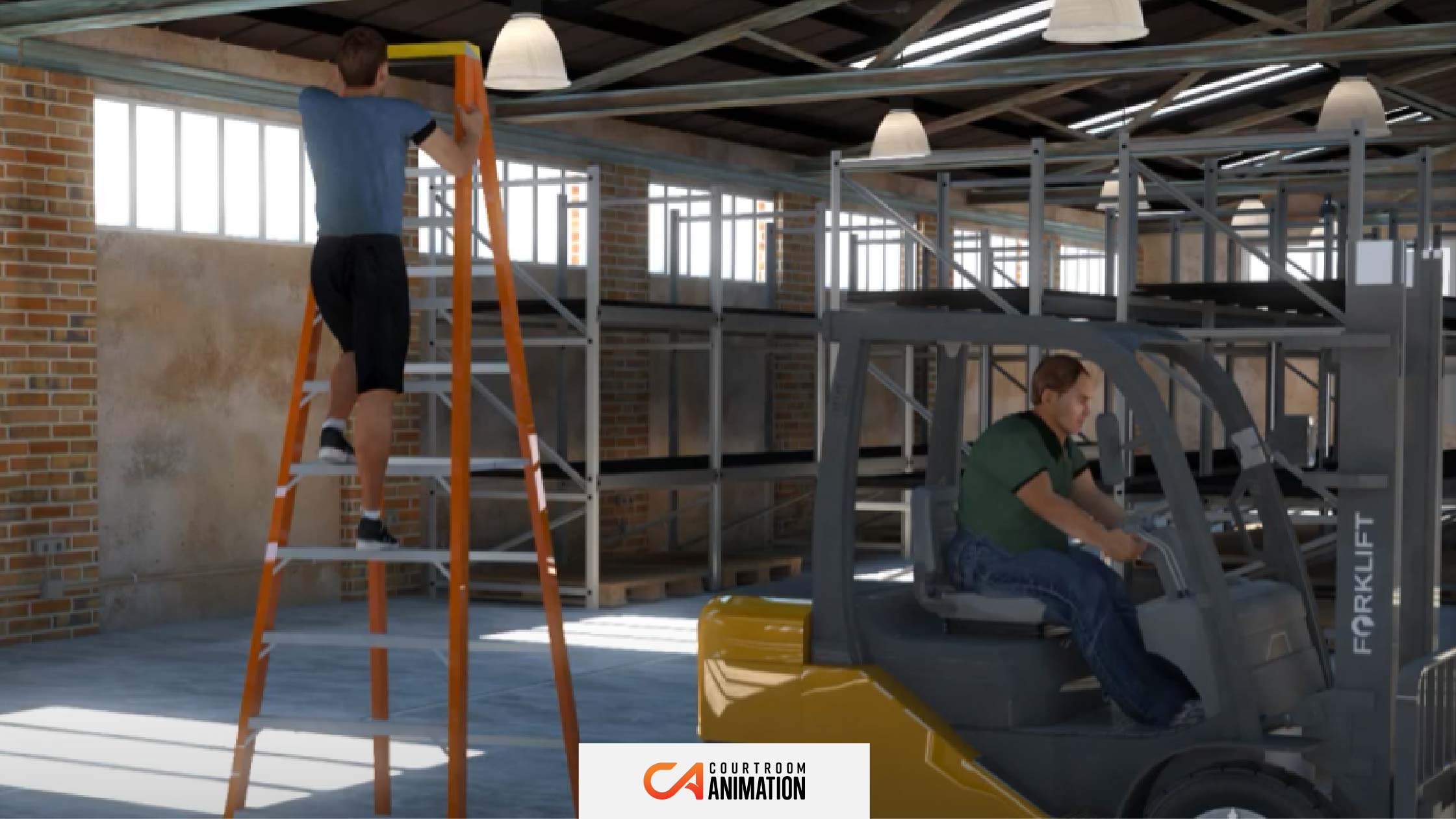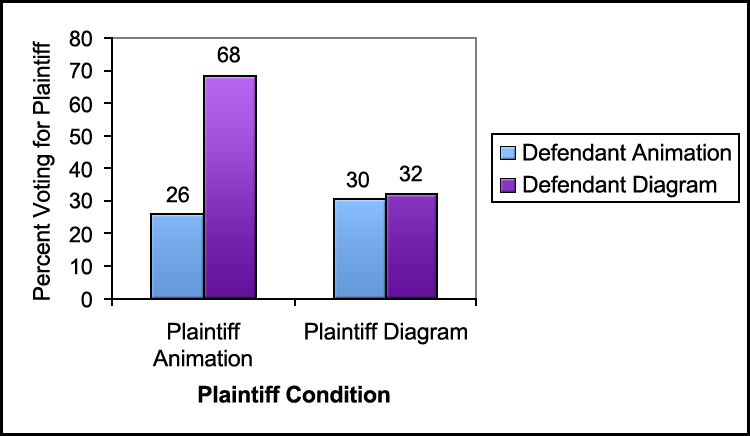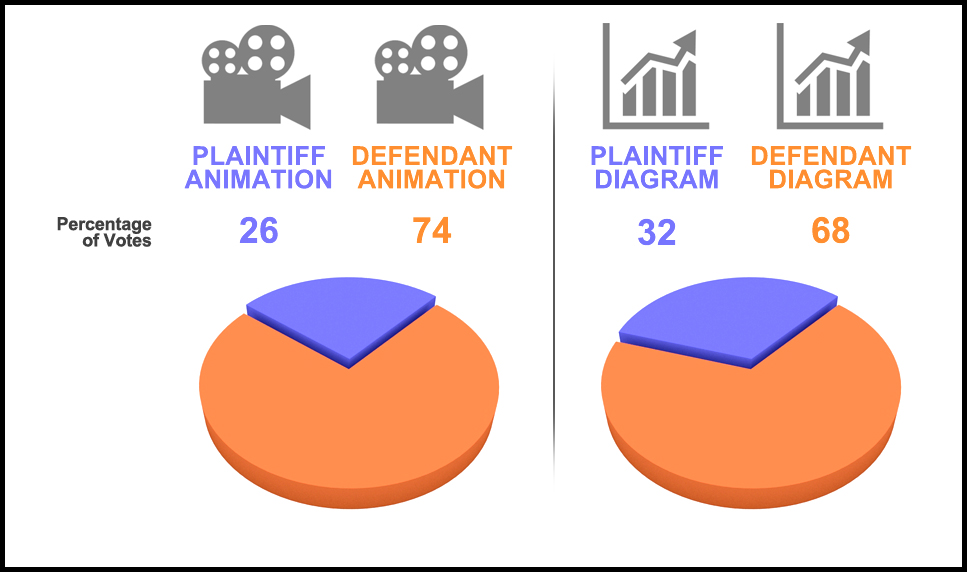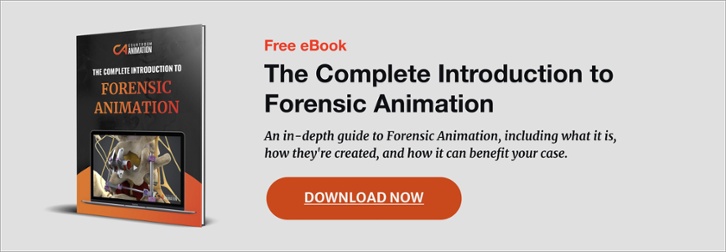
The job of an attorney is to tell a story and be extremely convincing of the facts involved. When it comes to a trial there will always be two sides of the story using the same set of facts, and typically one side will be more convincing than the other. Do you know what it takes to be the more persuasive lawyer?
It takes experience, personality, presentation and so much more to be successful. There are various tools that legal teams will use when going to trial, and one of them is legal animation.
Animation, illustrations and trial graphics are now a staple in courtrooms across the country. The entertainment and video game industries have done their part in pushing forward the development of the technology that allows us to now create a legal animation at a fraction of the cost that they once were.
Legal animations are now widely accepted into the courtroom by judges (when created correctly) and they are difficult to limit. Our team is experienced in creating high-quality animations that meet all standards of admissibility and exceed the expectations of our clients.
We have a 99% admittance rate and have achieved more than $1 billion in favorable verdicts and settlements for our clients. Make sure to check out our results page to see some of our most recent 3D animations that helped produce outstanding results in the courtroom or during mediation for our clients.
Why should you consider using legal animation for your case?
The answer is simple: they engage, educate and move the jury. But if attorneys truly believed this and understood the impact that animation and trial graphics can have then the use of animation would be much more widespread than it currently is.
This means that there must be some doubt over the effectiveness of animation and how it can influence a jury. In this post we will shed some light on how legal animations can influence juries using hard data and debunk any doubts about the success of this tool.
Meghan Dunn, a researcher at the Federal Judicial Center, ran a study examining the persuasiveness of computer animation on juror decision-making. She compared the effectiveness of animations to diagrams in mock trials.
The specific case involved an aviation accident and the only variable throughout the experiments was the use of legal animation by the plaintiff, defendant, both, or neither. Here is her table of the data collected:

Ms. Dunn’s conclusion from this data was that animation can influence juries. When the data is presented in another way, this conclusion is easier to see:

The above results show that when both sides used the same method of presenting their case, both using animation or both using diagrams, juries voted in favor of the defense. This shows that naturally the case was skewed towards a defense verdict.

What is significant about the second set of data is that when the plaintiff used an animation and the defense did not, the jury’s voting drastically changed. Simply put, the animation alone is what swayed the jury from a defense verdict to a plaintiff verdict. With so many variables in court cases, it is hard to determine what tips the scale in favor of one side or the other.
The study that we have presented here shows that animation undoubtedly can play a key factor in the way a jury votes – being prepared with an animation puts a case in a much stronger position.
Think about reading a book to a young child or sitting through a lecture explaining the scientific process of osmosis. A toddler will be engaged by a picture book that allows them to follow the characters and the plot with colorful illustrations.
If you try to read a book that has no pictures you will most likely lose the attention of the child within minutes. In the other example, if you are trying to learn about osmosis for the first time and you are only listening to a verbal explanation full of scientific terminology, your eyes will probably glaze over and you won’t retain any information.
On the other hand, if the explanation is paired with graphics or an animation showing how osmosis works then you will understand the concept, remember the process and be able to explain it to someone else in your own words. Legal animations achieve this same experience when paired with a good oral presentation, and they have the power to create a lasting impression on the jury.
Scientific studies have proven that when people listen to a captivating testimony or story their brains will react like a participant rather than a bystander. It’s also a fact that most people are visual learners and are more likely to understand and remember information that they receive visually rather than only listening to a lecture or a speech.
A fun fact that we take to heart is that humans can remember 80% of what they see, 10% of what they hear and 20% of what they read. Incorporating visual exhibits like legal animations into your litigation process can have a very significant and powerful impact on the judge, jury and overall outcome of your case.
When information is visually presented to a jury through a tool like legal animations, it allows them to remember key elements of the case and also to experience the situation first-hand, almost as if they are a witness in real-time.

At Courtroom Animation we take all of the information that is available in a case to ensure that our work is as close to the real thing as possible. This also means that our animations are believable and admissible in court. If you would like to learn more about our services, then please contact us today. We also encourage you to find us on Facebook or Instagram where you can see recent projects that we have worked on, get acquainted with our team and follow along as we share about our work and our industry!
Topics: